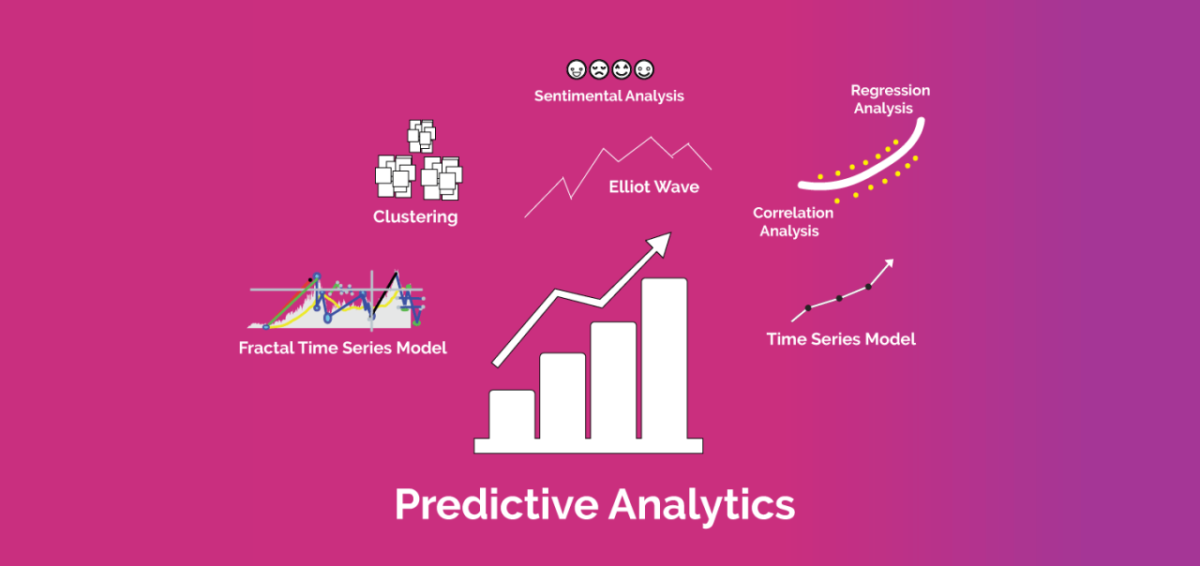
Unlock the Future: 7 Game-Changing AI Marketing Trends You Can’t Ignore
October 17, 2024
AI Meets UX: Designing Engaging User Experiences with Data-Driven Insights
October 25, 2024In today’s fast-paced digital landscape, Artificial Intelligence (AI) is no longer just a buzzword—it’s an essential tool for businesses to remain competitive. From optimizing ads to delivering hyper-personalized content, AI is changing the way marketers engage with their target audiences. But while many are already familiar with common AI applications like chatbots and predictive analytics, there are cutting-edge AI techniques that remain largely untapped. These innovative methods have the potential to dramatically boost marketing efficiency, creativity, and return on investment (ROI). If you’re ready to break away from the competition and up your game, it’s time to explore these 7 AI marketing techniques you probably haven’t tried yet.

AI-Driven Hyper-Personalization
What is AI-Driven Hyper-Personalization?
Hyper-personalization is a marketing strategy that leverages artificial intelligence (AI) to deliver highly tailored marketing messages to individual customers in real time. Unlike traditional personalization, which might only address customers by their first name, AI-driven hyper-personalization uses advanced data analytics to deliver recommendations and content that are completely tailored to each person’s preferences, behaviors, and even predicted future needs. Think of it as a strategy that allows businesses to speak directly to their customers’ desires at just the right moment.
How Hyper-Personalization Works
Using AI algorithms, companies can analyze vast amounts of data—like a customer’s browsing history, past purchases, and even their real-time behaviors on a site—to customize everything from product recommendations to email content. For example, Netflix uses a sophisticated recommendation engine that constantly evaluates user behavior to suggest shows or movies that fit the viewer’s unique tastes. Similarly, e-commerce websites like Amazon deploy AI algorithms to predict what products a customer is most likely to purchase next, serving them targeted promotions and suggestions.
Benefits of Hyper-Personalization
The major benefit of hyper-personalization is its ability to dramatically increase customer engagement. Personalized marketing content resonates more deeply with customers, leading to higher conversion rates and improved retention. For example, sending personalized emails with product suggestions based on previous purchases can increase the likelihood of a repeat sale. Additionally, hyper-personalization enhances customer loyalty by making the customer feel valued and understood, which in turn strengthens brand loyalty.
Tools for Hyper-Personalization
There are numerous platforms available to help businesses achieve hyper-personalization. Dynamic Yield and Optimove are two such tools that use AI to analyze user behavior and automate the delivery of highly targeted content. With these platforms, businesses can scale hyper-personalized messaging across multiple channels, whether it’s email, social media, or on-site content.

Predictive Analytics for Trend Forecasting
What is Predictive Analytics?
Predictive analytics is the process of using data, AI algorithms, and machine learning models to predict future outcomes based on historical data. In marketing, this means anticipating customer behavior, market trends, and even consumer purchasing patterns before they happen. Predictive analytics can help businesses tailor their campaigns more effectively, ensuring they’re always a step ahead of customer needs.
How Predictive Analytics Works
At its core, predictive analytics works by analyzing historical data to identify patterns and relationships. For instance, if an e-commerce company notices that certain customers tend to purchase a specific category of products every few months, predictive analytics can anticipate when they are likely to make their next purchase. This data can then be used to target those customers with timely and relevant promotions. Furthermore, predictive analytics can identify broader market trends, such as shifts in consumer preferences or seasonal buying habits, enabling businesses to adjust their strategies accordingly.
Benefits of Predictive Analytics
Predictive analytics offers numerous benefits for marketers. First and foremost, it enables more accurate forecasting, helping businesses to better allocate resources and manage inventory. For example, by predicting which products are likely to be popular during a particular season, retailers can optimize their stock levels, avoiding overstocking or understocking. Predictive analytics also enables more targeted marketing campaigns, as marketers can identify the types of customers most likely to respond to specific offers. This leads to increased ROI, as campaigns are tailored to those who are most likely to convert.
Tools for Predictive Analytics
Platforms like Google Analytics and RapidMiner offer robust predictive analytics capabilities. These tools use machine learning algorithms to analyze large data sets, identify trends, and provide actionable insights. By integrating predictive analytics into your marketing strategy, you can ensure that you’re always a step ahead of your competitors.

AI-Powered Visual Content Creation
What is AI-Powered Visual Content Creation?
In the world of marketing, visual content plays a vital role in capturing and retaining audience attention. However, creating original, high-quality visual content can be both time-consuming and costly. That’s where AI-powered visual content creation comes in. Using AI algorithms, marketers can now generate custom images, videos, and even designs based on brand guidelines, making content creation more efficient than ever before.
How AI-Powered Content Creation Works
AI-powered content creation tools use machine learning and deep learning algorithms to analyze existing visuals and generate new ones that are customized to fit specific brand aesthetics. These tools can either replicate artistic styles or create entirely new designs based on a set of pre-determined rules. For example, platforms like DALL-E use AI to generate realistic or abstract visuals from textual descriptions, while tools like Runway ML can create unique video content by analyzing patterns in existing footage.
Benefits of AI-Powered Visual Content Creation
One of the biggest advantages of AI-powered visual content creation is its ability to speed up the creative process. Instead of spending hours or even days creating visuals from scratch, marketers can generate high-quality content in a matter of minutes. This not only saves time but also reduces the cost of hiring professional designers or purchasing stock images. Additionally, because AI tools can generate completely unique visuals, businesses can ensure that their content stands out from the competition.
Tools for AI-Powered Visual Content Creation
Some of the most popular tools for AI-powered visual content creation include DALL-E, which generates images based on text inputs, and Runway ML, which focuses on creating video content. These tools can be easily integrated into any content strategy, allowing marketers to produce eye-catching visuals without breaking the bank.

Voice Search Optimization with AI
What is Voice Search Optimization?
With the increasing popularity of voice assistants like Siri, Alexa, and Google Assistant, optimizing content for voice search has become more important than ever. Voice search optimization involves tailoring your website, blog posts, and other content to be more easily discoverable through voice queries. Since voice search queries are often more conversational and longer than text-based searches, optimizing for voice search requires a different approach.
How Voice Search Optimization Works
AI plays a significant role in identifying natural language patterns and long-tail keywords that people typically use when conducting voice searches. Voice searches tend to be phrased as questions or conversational statements, such as “What’s the best pizza place near me?” rather than just “best pizza near me.” AI can help marketers understand these conversational patterns and identify the specific phrases and keywords they should target to rank higher in voice search results.
Benefits of Voice Search Optimization
The benefits of optimizing for voice search are numerous. First, voice search optimization can help businesses improve their local SEO, as many voice searches are location-based. For example, if someone asks their voice assistant for a nearby service or product, having optimized content can ensure that your business shows up in the top search results. Additionally, voice search optimization can help improve your website’s overall search engine rankings, as search engines like Google are increasingly prioritizing voice-friendly content.
Tools for Voice Search Optimization
Tools like AnswerThePublic and Moz provide valuable insights into the types of voice search queries people are using. By leveraging these tools, businesses can optimize their content to better align with the way people naturally speak, improving their chances of appearing in voice search results.

AI Chatbots for Real-Time Customer Interaction
What are AI Chatbots?
AI chatbots are advanced software programs designed to simulate human-like conversations with users. Powered by machine learning algorithms, these chatbots can engage in meaningful interactions with customers, providing real-time answers to their queries. Whether it’s assisting with product recommendations, answering frequently asked questions (FAQs), or offering post-sales support, AI chatbots have become an essential tool for businesses looking to enhance their customer experience.
How AI Chatbots Work
AI chatbots use a combination of Natural Language Processing (NLP) and machine learning to understand and respond to customer inputs. Over time, these chatbots learn from each interaction, improving their responses and becoming more accurate in addressing customer needs. They can handle multiple interactions simultaneously, making them particularly useful for customer service departments and e-commerce businesses where timely responses are crucial.
Benefits of AI Chatbots
AI chatbots provide numerous advantages, the most notable being 24/7 customer support. Since chatbots don’t need breaks, they can assist customers at any time of day, improving customer satisfaction and ensuring that no query goes unanswered. Additionally, AI chatbots can help businesses reduce their customer service costs, as they can handle many common inquiries without human intervention. They also enhance lead generation efforts by engaging users and collecting valuable data that can be used to nurture potential customers.
Tools for AI Chatbots
Some popular chatbot platforms include Intercom, Drift, and ManyChat. These tools allow businesses to build intelligent chatbots that can be integrated into websites, messaging apps, or social media platforms. By automating customer interactions, businesses can improve response times and free up human agents for more complex tasks.

AI in Programmatic Advertising
What is Programmatic Advertising?
Programmatic advertising refers to the automated buying and selling of digital ad space using AI-driven algorithms. This method leverages machine learning to place ads more efficiently and target specific audiences with precision. Instead of the traditional process of negotiating with advertisers and manually selecting ad placements, programmatic advertising uses real-time bidding to ensure that ads are shown to the right people, at the right time, in the right place. This makes it an essential tool for marketers looking to optimize their ad spending and maximize ROI.
How Programmatic Advertising Works
AI-powered programmatic platforms use algorithms to analyze user data and determine the best time and location to display an ad. The process happens in milliseconds, and it involves advertisers bidding for the ad space in real time. For example, when a user visits a website, the platform instantly evaluates the user’s data, such as browsing history, demographics, and behavior, to decide which ad is most relevant to them. The ad is then displayed to the user based on the highest bid. The entire transaction is automated, eliminating the need for human intervention.
Benefits of Programmatic Advertising
The primary advantage of programmatic advertising is its ability to deliver highly targeted ads to specific audiences, leading to increased engagement and conversions. By using AI, marketers can reach users who are more likely to be interested in their products, which improves ad performance and reduces wasted ad spend. Additionally, programmatic advertising offers real-time optimization, meaning that campaigns can be continuously adjusted based on performance data, ensuring that the most effective ads are being shown. This leads to better cost-efficiency and a higher return on investment.
Tools for Programmatic Advertising
Platforms like Adext AI and The Trade Desk are widely used for programmatic advertising. These tools use AI to optimize ad placement and target the right audiences, allowing businesses to run highly efficient campaigns. By embracing programmatic advertising, marketers can streamline their ad-buying process and reach more potential customers in less time.

Sentiment Analysis for Brand Monitoring
What is Sentiment Analysis?
Sentiment analysis is an AI-powered technique that uses Natural Language Processing (NLP) to evaluate and interpret the emotional tone behind text. It’s commonly used to assess how customers feel about a brand or product based on their social media posts, reviews, comments, and other forms of user-generated content. By analyzing these sentiments—whether they are positive, negative, or neutral—marketers can gain valuable insights into how their brand is perceived and take actionable steps to improve customer satisfaction.
How Sentiment Analysis Works
Sentiment analysis uses AI algorithms to scan large volumes of text and identify keywords, phrases, and patterns that indicate the emotional sentiment behind a message. For example, a customer who tweets, “I love this product, it’s amazing!” would be flagged as positive sentiment, while a comment like “This service is terrible, I’ll never use it again” would register as negative. These insights are then aggregated to provide businesses with a clear understanding of overall customer sentiment.
AI-powered tools can also categorize sentiments by intensity, determining whether feedback is slightly positive, strongly negative, or somewhere in between. Moreover, sentiment analysis can identify trends in real time, allowing brands to quickly address emerging issues or capitalize on positive feedback.
Benefits of Sentiment Analysis
The most significant advantage of sentiment analysis is that it allows brands to stay in tune with customer emotions, helping them respond swiftly to both positive and negative feedback. During a product launch, for example, sentiment analysis can provide real-time insights into how customers are reacting, enabling marketers to adjust their strategy if needed. Additionally, by continuously monitoring sentiment, brands can proactively manage their reputation, resolve potential issues, and improve customer loyalty. Sentiment analysis also offers valuable insights that can guide product development and customer service improvements.
Tools for Sentiment Analysis
Popular tools for sentiment analysis include Brandwatch and Hootsuite Insights. These platforms use NLP and machine learning to scan social media platforms, online reviews, and other user-generated content to provide detailed sentiment analysis reports. With these tools, businesses can stay on top of their brand perception and adjust their marketing strategies to align with customer sentiment.
Conclusion
Incorporating AI techniques into your marketing strategy isn’t just a luxury anymore—it’s a necessity for staying ahead of the curve. While many marketers are already familiar with AI applications like predictive analytics and chatbots, exploring the lesser-known techniques discussed in this blog post can truly transform your marketing game. From hyper-personalization to programmatic advertising and sentiment analysis, these AI-driven methods have the potential to boost efficiency, enhance creativity, and increase ROI.
It may seem daunting to implement these advanced techniques, but with the right tools and platforms, even small businesses can start experimenting with AI to see significant improvements. Whether you’re looking to enhance customer interactions, optimize ad spend, or improve your content strategy, AI is the key to unlocking your marketing potential.
Are you ready to explore these exciting AI techniques and take your marketing to the next level? Don’t hesitate—start by experimenting with one of the tools mentioned in this post and see the difference it can make in your campaigns. Transform your marketing strategy today and stay ahead of the competition.

